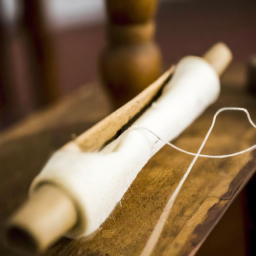
History of Sewing in India

Sewing, one of the oldest textile arts, has a rich and vibrant history in India. Dating back thousands of years, sewing techniques and traditions have been handed down through generations, shaping the country’s textile heritage.
In ancient times, hand-sewing was the predominant method employed by Indian artisans. The earliest evidence of sewing in India can be traced back to the Indus Valley Civilization (3300–1300 BCE). Excavations have revealed various artifacts, including needles made from bones and horns, indicating the use of sewing for making garments and decorations.
Over time, sewing techniques evolved, and intricate embroideries, appliqué work, and embellishments became integral parts of Indian textiles. The Mughal era (1526–1857) witnessed the introduction of refined sewing techniques and the integration of Persian and Central Asian influences. Intricate embroideries like zardozi, chikankari, and kantha work gained popularity during this period.
The British colonial rule in India (1858–1947) brought mechanized sewing machines to the country. The industrial revolution and technological advancements in Europe greatly impacted the Indian textile industry. Sewing machines revolutionized production, making garments more accessible and affordable.
Today, sewing is a thriving industry in India. Traditional techniques continue to be preserved and celebrated, while modern sewing technology has taken center stage. Indian fashion designers combine traditional artistry with contemporary designs, creating eclectic and globally recognized pieces.
The art of sewing has not only been limited to personal use or fashion but has also contributed significantly to the economic growth of India. From the cottage industry to large-scale manufacturing, the sewing sector has provided employment to countless individuals, especially women, empowering them economically and socially.
In conclusion, the history of sewing in India is a testament to the country’s rich textile heritage. From ancient hand-sewing techniques to the integration of modern sewing machines, this art form has evolved and adapted over the centuries. Sewing continues to be an integral part of Indian culture, reflecting a harmonious blend of tradition and innovation.




